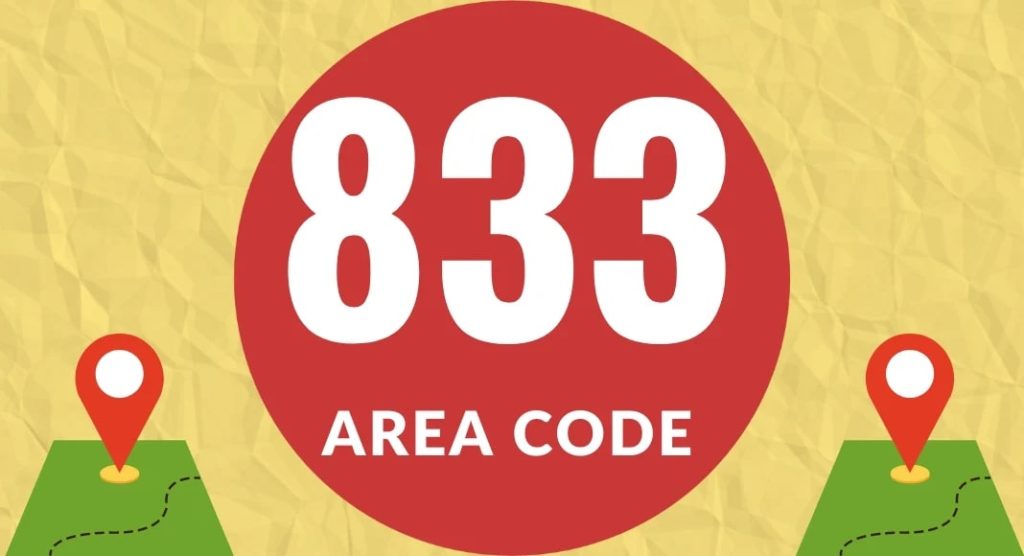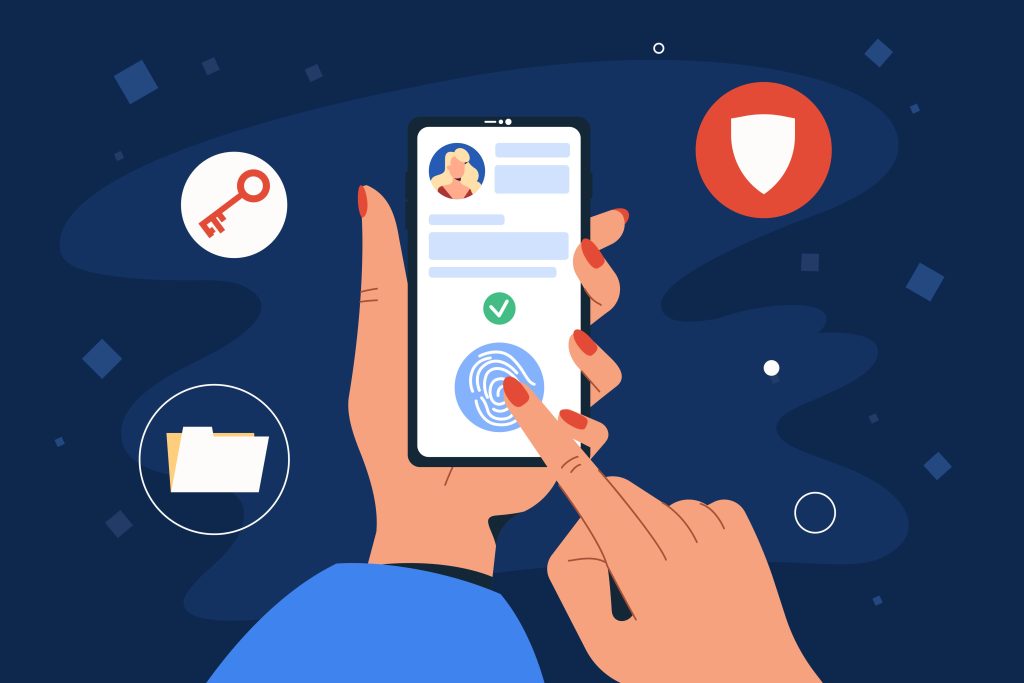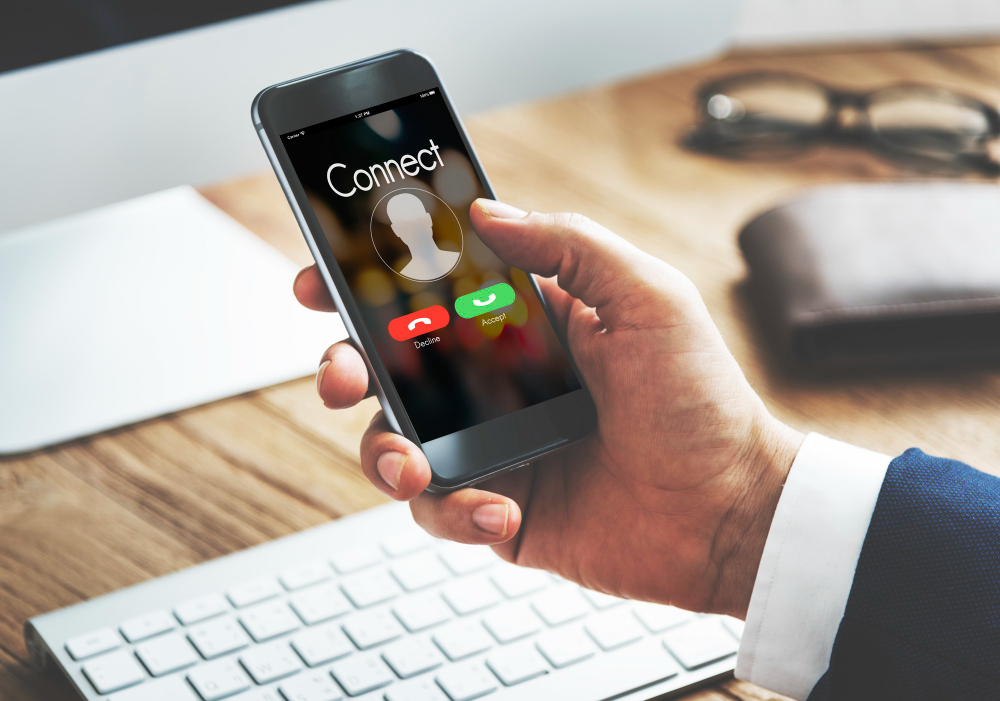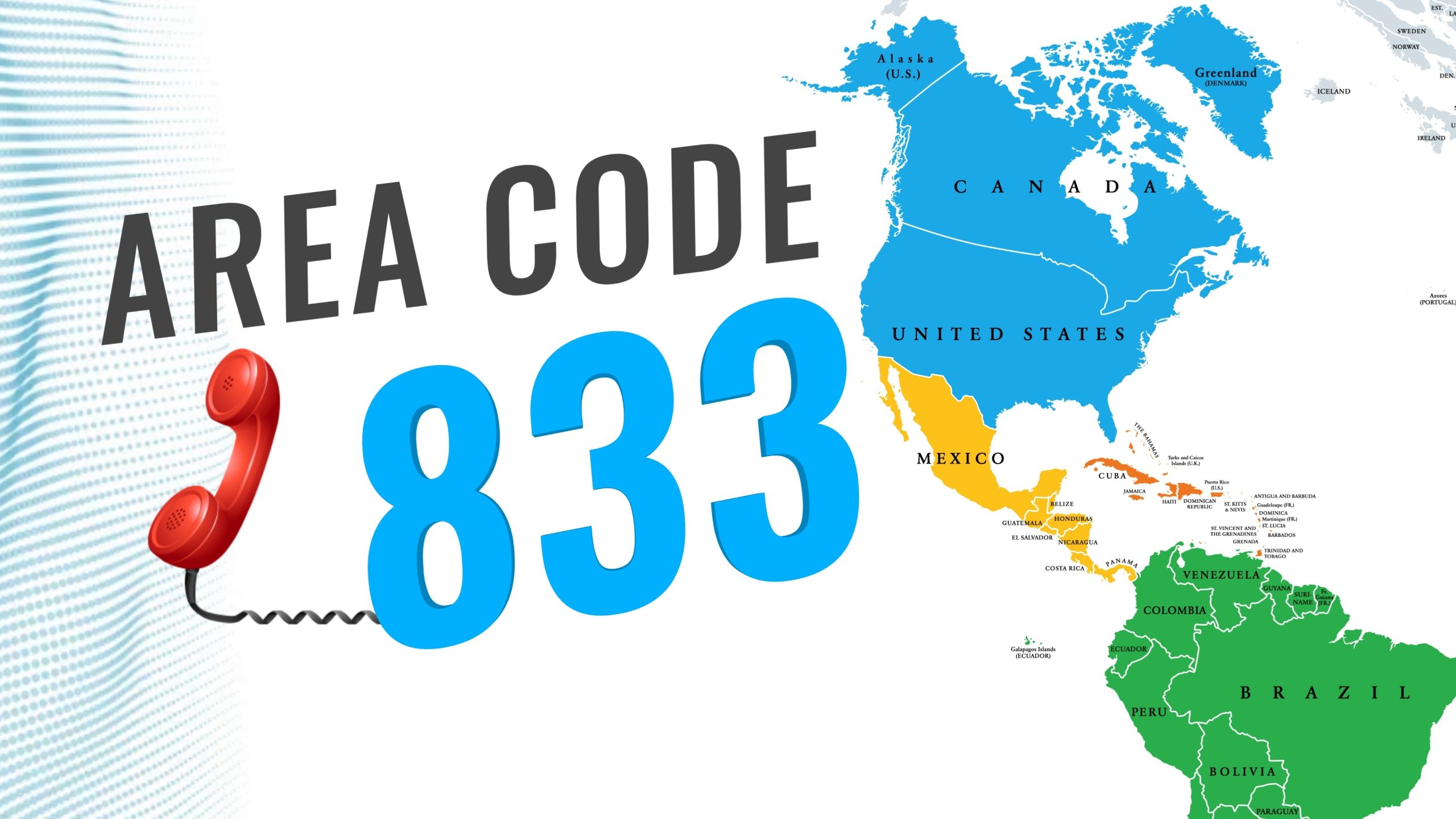The evolution of technology has brought immense convenience to our lives. However, it has also given rise to various forms of scams and fraudulent activities. One such deceptive practice that has emerged in recent years is associated with the ‘833’ area code, often dubbed as the 833 Area Code Scam. Knowing the signs of such scams and the ways to defend oneself can be the difference between staying safe and falling victim.
What is the 833 Area Code?

The 833 area code is one of the North American toll-free area codes, designed to be used for specific types of telecommunication activities where the receiver of the call pays the cost, rather than the caller. Similar to other toll-free codes like 800, 888, 877, and so forth, 833 numbers are often used by businesses to offer a free line of communication for their customers or clients. These numbers can be dialed without incurring any charge to the person placing the call, regardless of its origin within North America. Over time, as other toll-free codes have become exhausted due to high demand, newer ones like 833 have been introduced to cater to the continued need.
What is an 833 Area Code Scam?

The 833 Area Code Scam revolves around the exploitation of the toll-free 833 area code. In this scheme, scammers create a phone number with the 833 prefix, attempting to emulate legitimate businesses or institutions. They then place unsolicited calls to individuals or send deceptive messages, often conveying urgent situations like compromised accounts or unpaid debts. The primary goal is to induce panic or concern, leading the recipient to share personal or financial information. This data can then be used for fraudulent activities, such as identity theft or unauthorized transactions. It’s imperative for individuals to exercise caution and verify any unsolicited communication associated with toll-free numbers, especially before divulging sensitive information.
How Does the 833 Area Code Scam Work?

1. The Set-Up
Scammers are cunning operators, always searching for opportunities to exploit unsuspecting victims. One such method involves the toll-free 833 number. By choosing this number, they capitalize on its reputation as a trusted prefix, commonly used by genuine businesses. Once they’ve secured this number, they give it an identity—often mimicking trusted institutions like banks or governmental bodies. This meticulously crafted identity makes the entire operation seem credible, ensuring that potential victims don’t immediately dismiss their subsequent communications as fraudulent.
2. The Deceptive Call
With their credible 833 number in place, scammers then initiate the heart of their scheme: the deceptive call or text. Their approach is invariably designed to induce panic or concern. They may claim there’s a pressing financial discrepancy or a serious account-related issue, fostering a sense of urgency. Some might even masterfully craft voice messages, ensuring they sound both legitimate and pressing, further urging the victim to take immediate action by returning the call.
3. Phishing for Information
This is where the trap is sprung. When a worried or curious individual returns the call or responds to the message, they’re met with a seemingly benign request for confirmation of personal or financial details. However, this “confirmation” is the scam’s true objective. Under the pretext of addressing the alleged issue, the scammer extracts vital information. Whether it’s banking credentials, credit card details, or personal identification information, the scammer’s end goal is clear: gather enough data to commit identity theft or fraud, allowing them to access funds or benefits illicitly.
How To Protect Yourself from the 833 Area Code Scam?

1. Don’t Trust Caller ID
In an era where technology can be both an asset and a foe, Caller ID spoofing has become a favored tool among scammers. This crafty technique allows them to present any number they desire on your screen, even mimicking the number of institutions you trust. It’s a digital masquerade, designed to deceive and lower your guard. A golden rule in today’s digital landscape is skepticism. Even if the number flashing on your screen seems familiar, remember it’s easy for ill-intentioned individuals to fake it. The safest bet is to always approach unsolicited calls with caution, acknowledging that appearances can be deceiving.
2. Never Share Personal Information
The phone rings, the caller sounds official, and their request seems reasonable, but pause for a moment. Your personal and financial data are invaluable assets, keys that can unlock various aspects of your life. Scammers are aware of this, which is why they weave intricate stories to get you to divulge these details. Unless you were the one who initiated the call and have full confidence in the identity of the person on the other end, shield your information. Think of it as a protective barrier, one that you should only lower when you’re absolutely certain of the caller’s authenticity.
3. Verify Independently
Trust, but verify. This adage holds especially true for unexpected or suspicious calls. If someone claims to be representing your bank, an official agency, or any other entity, don’t take their word at face value. Politely end the conversation without divulging any information. Then, take the initiative: research and dial the official contact number for the claimed institution. By reaching out proactively, you’re navigating the situation on your terms, ensuring you’re interacting with genuine representatives and not falling into a scammer’s trap. This independent verification acts as a second layer of defense, shielding you from potential deceit.
4. Stay Informed
In the ever-evolving world of scams, staying updated is your armor. Just as con artists refine and adapt their tactics, you too should stay abreast of the newest deceitful strategies they employ. Bookmark reliable websites, sign up for scam alerts or engage in community forums where individuals share their encounters. Think of this as your early warning system. When you’re knowledgeable about the tactics being used, you’re far less likely to be ensnared. In the battle against scams, knowledge isn’t just power it’s protection.
5. Report Suspicious Activity
Being targeted or falling for a scam isn’t just a personal crisis—it’s a communal alert. By reporting dubious calls or activities to the appropriate bodies, like local police or the FTC, you’re doing more than seeking justice for yourself. You’re lighting a beacon for others, helping authorities crack down on these fraudsters and potentially preventing someone else from becoming a victim. Remember, in the collective effort against scams, every report matters, painting a clearer picture of the adversaries we’re up against.
6. Implement Call-Blocking
Modern problems require modern solutions. As scammers grow more sophisticated, technology offers tools to counteract their attempts. Call-blocking services or specialized apps can act as your digital guardian, sifting through incoming calls and flagging or blocking those that seem suspicious. Think of these services as a digital filter, one that stands between you and potential fraudsters, ensuring that only genuine calls reach you. By adopting such tools, you not only reduce the risk of scam encounters but also enjoy a more peaceful, uninterrupted digital experience.
7. Educate Friends and Family
The digital world can be a daunting realm for many, especially for older generations who might not be as plugged in. Scammers exploit this gap, preying on those who might not be aware of their deceptive tactics. It’s more than just a duty—it’s a responsibility to share your knowledge with those around you. Whether it’s a casual conversation over dinner or a dedicated session explaining the latest scams, ensuring your loved ones are informed is a shield against potential deceit. After all, shared wisdom fortifies the entire community against the crafty maneuvers of fraudsters.
8. Check for Reviews or Complaints
The digital age comes with an invaluable tool—collective experience. If a strange number contacts you and something feels amiss, harness the power of the internet. Know about the online forums, websites, or social platforms where individuals might’ve documented similar encounters. By doing this, you not only validate (or dispel) your suspicions but also contribute to a larger community narrative, allowing others to benefit from shared insights. It’s like a communal early warning system, with each post acting as a beacon for others.
9. Avoid Unknown Numbers
In our interconnected world, it’s tempting to answer every call, fearing missed opportunities. But with scams rampant, caution is a valuable ally. Unknown numbers, especially from unfamiliar area codes, can be potential red flags. Let them slide to voicemail. Genuine callers with genuine intentions will leave a message. Scammers, on the other hand, often bank on direct interactions to manipulate and deceive. By filtering calls this way, you give yourself the upper hand, dictating the terms of communication on your turf.
10. Change Passwords Regularly
Security is much like hygiene—it requires regular attention. Changing passwords is akin to washing your hands, a routine yet vital measure. Regularly updating your credentials ensures that even if a scammer has an old password, it’s rendered useless. Rotate passwords, mix them up, and use combinations that are hard to guess. It might seem like a chore, but consider it a digital moat, keeping potential intruders at bay and safeguarding your digital fortress.
Conclusion
The 833 Area Code Scam underscores the importance of staying one step ahead in a world where deceit is but a phone call away. With scammers constantly evolving their tactics, awareness and proactive measures are our strongest defenses. By understanding the nature of such scams, verifying suspicious calls independently, and educating those around us, we can build a collective shield against these digital predators. Remember, in the battle against fraud, knowledge is not just power; it’s protection.
FAQs
The 833 Area Code Scam involves fraudsters using toll-free 833 numbers to impersonate legitimate businesses or agencies in an attempt to extract personal or financial information from unsuspecting individuals.
No, many legitimate businesses use 833 toll-free numbers. The scam pertains to fraudsters misusing these numbers.
Scammers usually make unsolicited calls, pressuring individuals about urgent issues, unpaid bills, or other matters that require immediate attention. If in doubt, always verify by contacting the institution directly.
The 833 code, being a toll-free number, is attractive to scammers as they can make it appear as if they are legitimate businesses, especially when combined with Caller ID spoofing.
Caller ID spoofing allows scammers to change the phone number that appears on your Caller ID to make it seem like they’re calling from a legitimate business or agency.
By impersonating trusted institutions, scammers aim to extract personal and financial information from individuals, which they can then use for fraudulent activities or identity theft.
Don’t provide any information. Hang up, and contact the institution they claim to represent directly through a verified number.
Yes, you can use call-blocking services or apps to filter out potential scam calls.
Regularly check trusted news sources, and official government alerts, and subscribe to scam awareness newsletters or websites.
Contact your bank and other relevant institutions immediately. Monitor your accounts for suspicious activities and consider changing your passwords.
Scammers often target vulnerable groups, such as the elderly or those not tech-savvy, but anyone can be a potential target.
Educate them about the scam and its tactics. Encourage them to never share personal information over the phone and to always verify any suspicious calls.
Yes, scammers can misuse any area code, not just 833. Always approach unsolicited calls with caution.
Report it to your local authorities and the Federal Trade Commission (FTC).
While the 833 area code is North American, similar scams occur worldwide using different codes or tactics.
While some might, many scammers avoid leaving voicemails. It’s best to be wary of any unsolicited or suspicious messages.
Search the internet for the number to see if there are any reports or complaints. Additionally, you can contact the claimed institution directly using a verified number.
Yes, scammers often exert pressure, rush decisions, or use scare tactics to extract information.
Awareness equips individuals with the knowledge to identify and avoid potential scams, reducing the risk of becoming victims.
Regularly review your financial statements and credit reports for suspicious activities. If you find any discrepancies, contact the relevant institution immediately.
































































